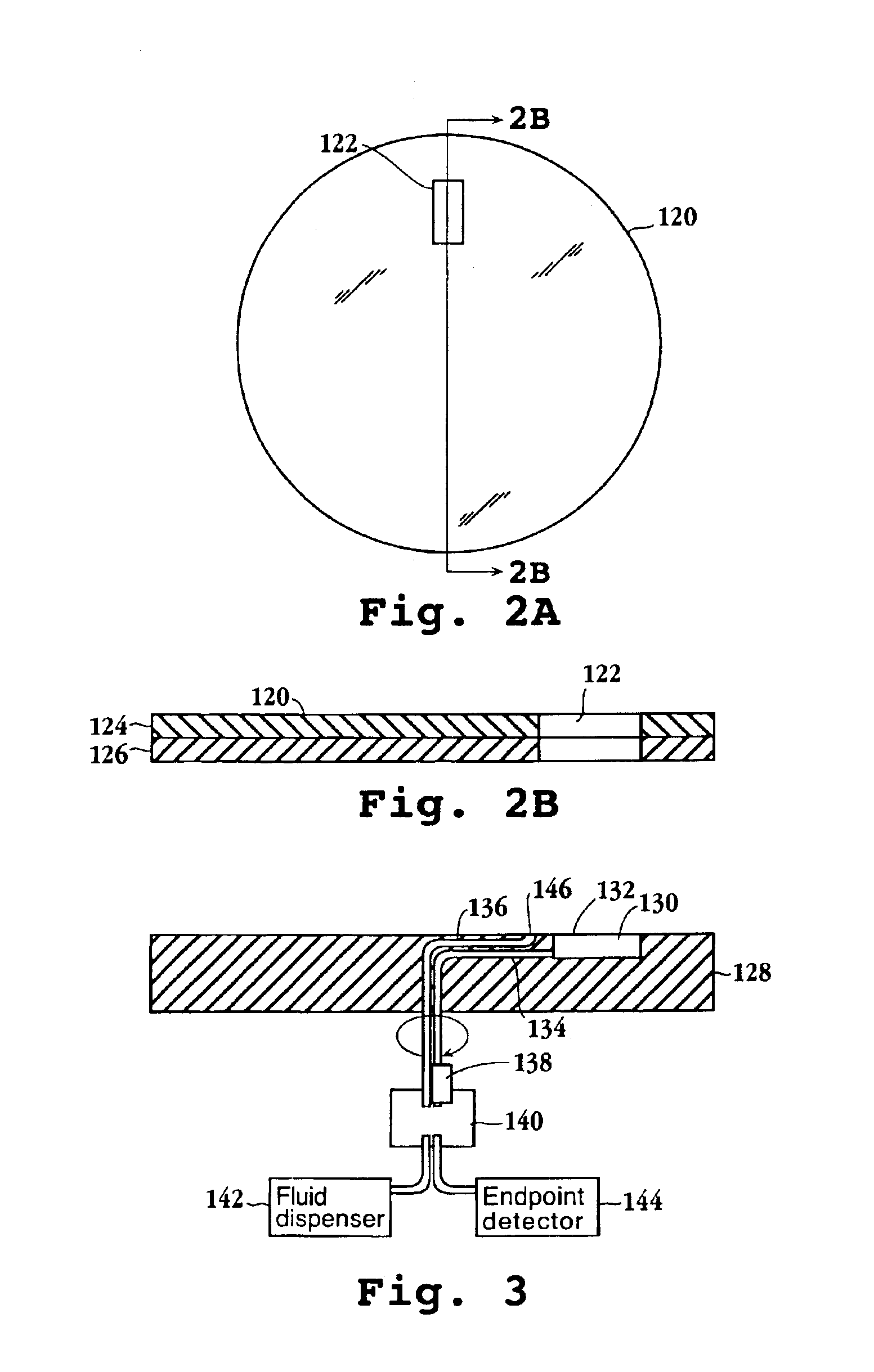Apparatus and method for providing a signal port in a polishing pad for optical endpoint detection
a technology of optical endpoint detection and signal port, which is applied in the field of semiconductor manufacturing, can solve the problems of device failure, poor yield, environment in the gap , etc., and achieve the effect of constant environmen
- Summary
- Abstract
- Description
- Claims
- Application Information
AI Technical Summary
Benefits of technology
Problems solved by technology
Method used
Image
Examples
Embodiment Construction
[0028]An invention is described for a method and apparatus which provides a substantially constant environment to accurately measure the thickness of a layer of a wafer during a chemical mechanical planarization (CMP) operation. It will be obvious, however, to one skilled in the art, that the present invention may be practiced without some or all of these specific details. In other instances, well known process operations have not been described in detail in order not to obscure the present invention.
[0029]The embodiments of the present invention provide an apparatus and method for maintaining a substantially constant environment in a cavity where an optical pathway traverses. The substantially constant environment minimizes any interference with in-situ thickness measurements of a wafer undergoing CMP. Additionally, by providing the stable environment, the conditions under which the in-situ end point detector is initially calibrated remain substantially constant throughout the CMP ...
PUM
| Property | Measurement | Unit |
|---|---|---|
| width | aaaaa | aaaaa |
| width | aaaaa | aaaaa |
| length | aaaaa | aaaaa |
Abstract
Description
Claims
Application Information
 Login to View More
Login to View More - R&D
- Intellectual Property
- Life Sciences
- Materials
- Tech Scout
- Unparalleled Data Quality
- Higher Quality Content
- 60% Fewer Hallucinations
Browse by: Latest US Patents, China's latest patents, Technical Efficacy Thesaurus, Application Domain, Technology Topic, Popular Technical Reports.
© 2025 PatSnap. All rights reserved.Legal|Privacy policy|Modern Slavery Act Transparency Statement|Sitemap|About US| Contact US: help@patsnap.com



